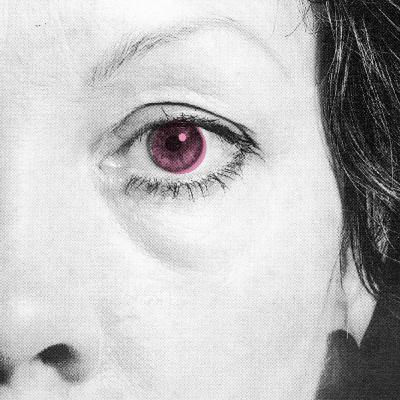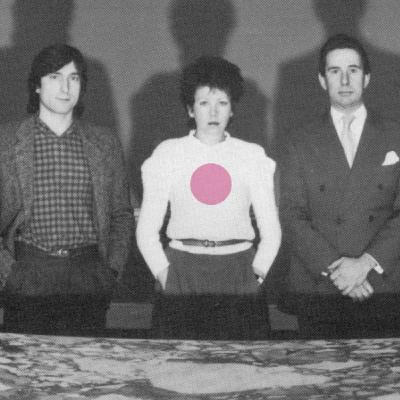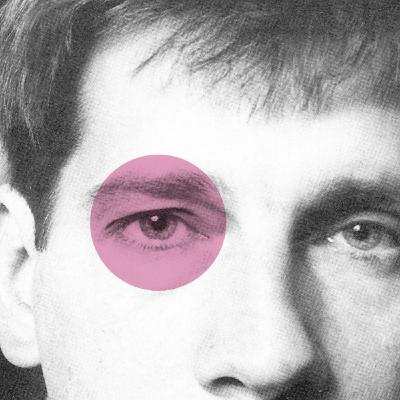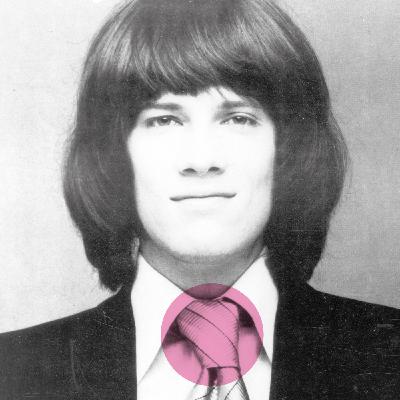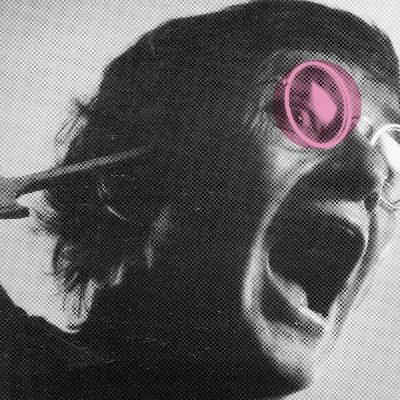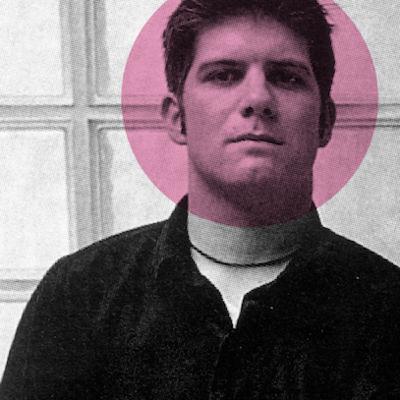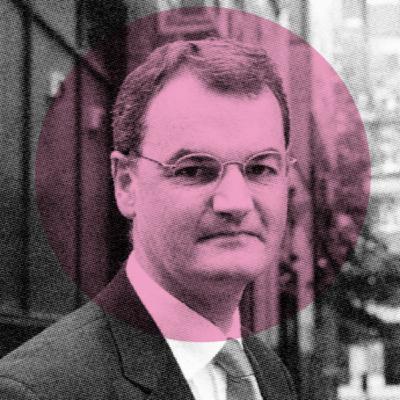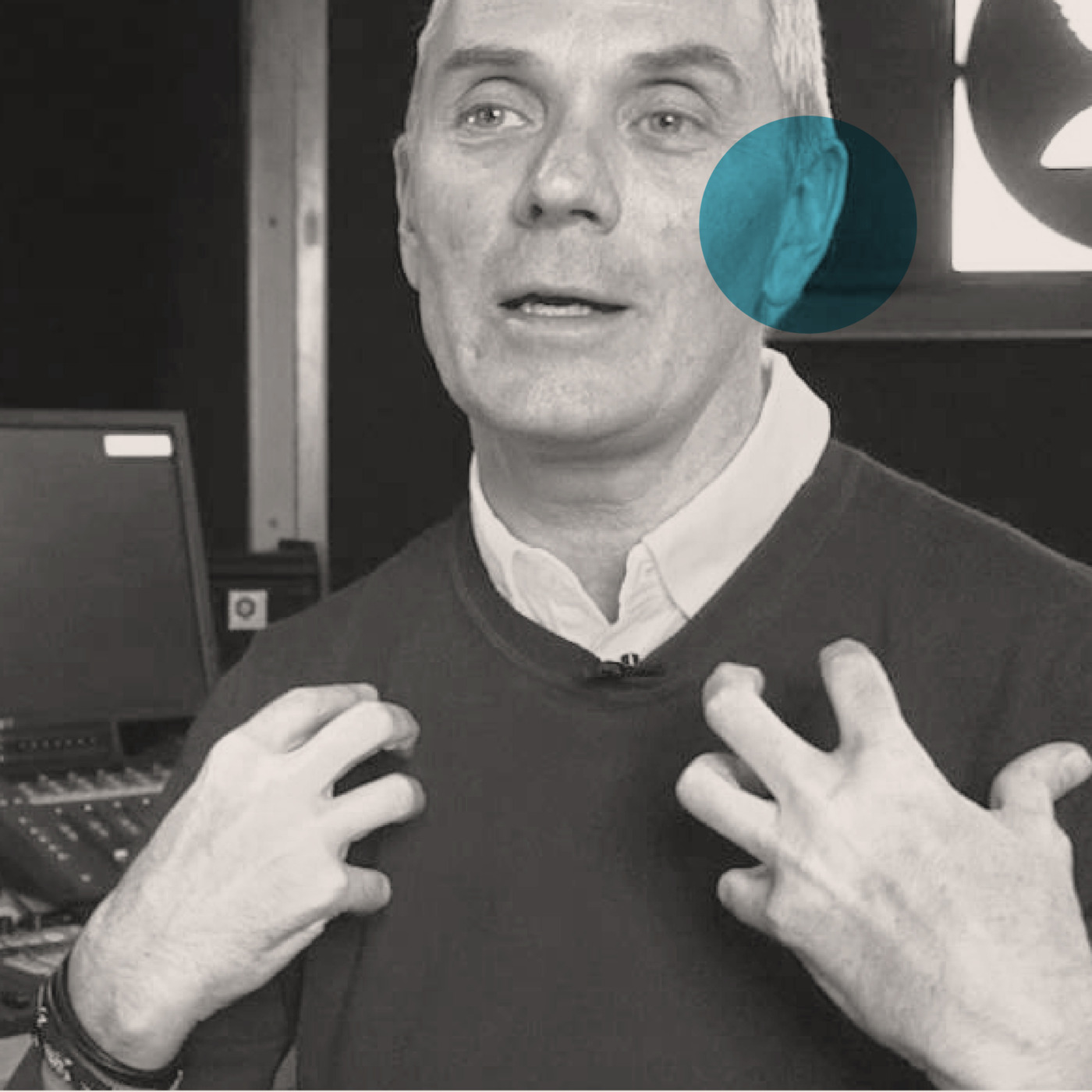Discover STUFF FROM THE LOFT - Dave Dye
STUFF FROM THE LOFT - Dave Dye

31 Episodes
Reverse
Bartle Bogle Hegarty opened its doors in 1982.Eight years later, Campaign voted them the agency of the decade.Why?Their work was considered, intelligent, and, in a decade often referred to as style-obsessed, BBH was the most style-obsessed.But they also had something few agencies have today; swagger.They had the confidence, or is it arrogance? to cut their own path.Refusing to do creative pitches, turning down business and making challenging creative calls few agencies would make.For example, on Audi, the created an end line only 5% of the population could understand – Vorsprung Durch Technik.For a desperate to become relevant to a new generation Levi’s, they soundtracked their ads with music their parents would consider old-fashioned.(Normal now, unusual then.)And on the subject of female sanitary protection, which everyone knew had to be dealt with delicately, like defusing a bomb.They risked it all, by boldly talking to women like human beings.Their Dr Whites ads ditched metaphors, blue liquid and any mention of roller-skating.Not only were these choices counterintuitive, they sold.As they put it in their AAR reel ‘We don’t sell (fade to black) We make people want to buy’.It was true, it was like they knew something others didn’t.Brands that chose BBH in the eighties were sprinkled with some kind of fairy dust that made them desirable and often fashionable.Since their launch, and for most of its first decade, John Hegarty worked writer Barbara Nokes.Together, they created the three campaigns above.The foundations of the agency. And one of their ads, Levi’s Black Sheep (below), remains as their logo and philosophy.We cover this in the second part of my chat with Barbara.Hope you enjoy it.
During my first year in advertising, a shiny new book turned up at the agency (Brooks Legon Bloomfield).Weirdly, some in the creative department referred to it as 'the bible'.It's actual name was The Designers & Art Directors Annual.I was told it showed the best advertising and design from the U.K.Although, also at this point, the U.K. arguably produced the best advertising and design on the planet.This was the 1986 version.The advertising featured was judged by 72 jurors.Only 4 were female.1 was Barbara Nokes.315 advertising creatives had their work included.29 were female.Of those, Barbara Nokes had the most ads reprinted.She was the 5th most successful creative overall. (14 entries and a silver).I didn't think about whether she was male or female at the time, I just loved her work.Always smart and punchy.At the time, she was working with one of my favourite art directors; John Hegarty.She's been top of my wanted for the last decade.She finally relented.Enjoy.
To hear Derek tell it, his career was totally unplanned.One impetuous decision after the next.Leading to endless mistakes.Exhibit A: Quitting the best agency in the country to go on holiday with his girlfriend. (CDP)To me, it looks as meticulously pre-planned as any of the plots in the ‘Ocean’s’ films.STEP 1: Work for the best agencies in town:(CDP, BMP and DDB).STEP 2: A reconnaissance trip to the States (Smith/Greenland).STEP 3: Create financial security (Day/Devito-French).STEP 4: Build a creative reputation at the most creative agencies of their day (WCRS and AMV).STEP 5: Practice being a Creative Director at a big, bad agency (Ted Bates).STEP 6: Now ready, you start your own shop (BDDH).STEP 7: Position the agency as the first of a new trend (Third Wave).STEP 8: Turn Marketers Directors curiosity about the Third Wave into retained business.STEP 9: Sell.Have a listen, tell me I’m wrong.
Being one, I'm very aware of my fellow double d's out there in advertising.Dave Droga - met once, gave him a lift after judging D&AD together.Donny Deutsch - never met, seen him on Morning Joe though.David Denton - did a few ads with him at BMP, did Cointreau 'Ice melts', amongst many others.Don Draper – never met, seems cool.And Derek Day - less known than the first three, but well worth checking out.I'd hear his quotes on a regular basis back in the early nineties.My then writer, Mike McKenna, had worked for Derek twice, first at Ted Bates, then Butterfield Day Devito Hockney, and would regale me with 'war' stories.I was new to the business, so ate them up, desperate for clues on how it worked.Mike's most repeated was a version of this - "I showed him our campaign for (insert various campaign names here)...Derek pulled a face, like a bulldog chewing a wasp, pull a face, then said (insert various clever critiques here)... and the scales fell from my eyes”.In a sea of dumb, crass ads, Derek's work always seemed clever and considered.Often not criteria that wins big awards.They tend to go to flashy and different.If I had a brief and wanted to win an award, quite a few writers spring to mind, if it needed help to my family business grow, Derek's would spring to mind.Looking at his career, there's a whiff of Zelig* about it. (*You’ll have to google it, soz.)Hired by Alan Parker to work at the best shop of the sixties - Collett Dickenson Pearce.Hired by John Webster to join arguably the best shop of the seventies - Boase Massimi Pollitt.(In part 2, we find he was also hired by David Abbott to join arguably the best shop of the eighties - Abbott Mead Vickers.)Then onto Doyle Dane Bernbach.Smith/Greenland in America, under futurist Faith Popcorn.Back to Blighty to become Creative Director at 25.Setting up a Cramer Saatchi-like creative consultancy for seven years, earning a ‘Seymour’ when Geoffrey was still in short pants. (Again, I refer you to google.)Then taking a 75% pay cut to join new agency Wight Collins Rutherford Scott in an attempt to win creative awards.And that’s just part one.We had a great chat, hope you enjoy it.
You can count the number of Creatives who embrace research on one finger.The rest of us desperately try to fight it with lines like 'you can't research original ideas', 'the group gets lead by its most vocal member', 'the public can only judge finished ads, not research material', and on and on.Good arguments.But the argument against is better - John Webster.Once delivered, it's hard for us sceptics to know where to go.He loves research.He does the best work.So why did he embrace it?How did he use it?And why doesn't everyone who loves his work follow his lead?I asked these and more to Sarah Carter, Adam&Eve/DDB Global Planning Partner, who worked with John as his planner for over fifteen years and who knows how many ads.Hope you enjoy it.
British advertising may have had more successful businessmen.More accomplished creative directors.Bigger award winners.But never a better Creative.No one has more ideas living in British people’s heads than John Webster.They didn’t gatecrash either – they were invited in.Singing and dancing their way past the barriers and into the national consciousness.One big, happy conga line; Smash Martians, Cresta Bear, Honey Monster, John Smith’s Arkwright, the Prize Guys, the Humphreys, and on and on.Born across four different decades.Created, unlike other ads at the time – alone and using research.Occasionally John and a writer are credited, but primarily John was both the art director and writer.At the time, Bernbach’s 1+1=3 was the law, so that was very rare.Rarer still, were Creatives who embraced research.Creatives viewed it as a killer of creativity and innovation.I thought I’d look into these aspects of John’s process.First, by talking about how John created ideas.Fortunately, Dave Trott broke his anti-podcast rule, which is great, because I couldn’t think of anyone better to talk to on the subject.Dave worked with John through the seventies and is obviously a brilliant Creative in his own right. (He’s not just a blogger kids.)Next, I’ll talk to planner Sarah Carter about how John used research to shape ideas, but first, here’s Dave…
If you’ve ever wondered how reliant creatives are on their producers, count how many are married to them.Lots.Including me, my two creative partners at Campbell Doyle Dye and dozens of friends. Psychologists say we seek qualities in a partner we don't have ourselves.To create more complete children.So right brainers, who come up with the theories, need left brainers to help turn them into reality.Yvonne Chalkley has turned more crazy, impossible, can’t-be-done theories into reality than anyone.After watching her ads, you could be forgiven for thinking each came with a blank cheque for production and a guarantee that the creatives had final sign off.Obviously, neither were true.How you navigate between the differing demands from the client, agency, film production company and creative team I don't know.Don’t compromise and the script may not get made.Compromise too much and the script and it may not be worth making.And here’s the really weird, spooky thing - I can’t find anyone who’s ever heard Yvonne raise her voice.Or say no.I asked her to explain.(She said ‘yes’, obvs.)This is the first episode edited by Parv - thanks Parv! (What were the other guests- chopped liver?)
Imagine a day where you don’t own a computer, and you lose your phone just after breakfast.We used to live like that.Every damn day.With virtually no access to information.Researching how to be better at your job wasn’t a thing.Advertising people didn’t do podcasts or post articles about their work.True, there were books, but not many.Aside from awards annuals, the main two were ‘Ogilvy On Advertising’ and ‘Bill Bernbach’s Book’.Occasionally you’d photocopy an article from Campaign, Creative Review or Direction magazine.Dave Trott’s ‘How To Get Your First Job In Advertising’ was the most useful.I had a copy of a copy of a copy of a copy of a copy.The text was so faded and broken up it looked like an old religious document.Which it was in a way.It’s still great. (I’ve attached a copy below.)Later, The Copy and Art Direction Books turned up.They were a revelation – good creatives explaining how they create.(If you haven’t read Richard Foster’s piece do, you’ll be a 9% better writer after reading it.)We have the opposite problem today; too much.But it leads to a kind of inertia.A bit like living next to St. Pauls, you put off visiting, because you think ‘it’ll be there tomorrow, next week, next year’.The other problem is who is or isn’t worth listening to?LinkedIn if packed with people aggressively telling you exactly how to create ads as good as the ones they… like.At the other end of the spectrum are people like Dave Trott, George Tannenbaum, Brian Burch, The Behind The Billboard guys, Rory Sutherland, Ben Kay and many more I’ll be embarrassed tomorrow that I forgot to mention.And Steve Hudson.He posts a series called The Power Of Advertising on LinkedIn where he breaks down his (and Victoria Fallon’s) ads from nose to tail.From brief to air.What’s great about it is the work.A lot of teams have a style or preference, Steve (and Victoria) don’t.At least, not that I can spot.What links Audi to Anti-Smoking to One To One to Levi’s to Kingshield other than they’re all great?The weirdest thing about our chat was realising how short their creative career was.10 years.They took it very seriously, which lead to some great work, but maybe some bad decisions too.Hearing about Steve’s career was a bit like watching a horror film.Instead of shouting ‘LOOK BEHIND YOU!’ I was shouting ‘DON’T RESIGN TO HEGARTY!’ or ‘STAY AT ABBOTT MEAD!’.Anyway, it was a great chat, hope you enjoy it.
Creating is different to managing.Creators try to break rules, managers set them.Creators look inward, managers look outward.Creators are introverts, managers are extroverts.Not 100%, but most, AMV/BBDO once Myers Briggs tested their creative department.The results came back - fifty people were rated ‘I’ (introvert), one was ‘E’ - the creative boss (Peter Souter).I’s are ‘more likely to be successful in careers like writing, science and art’.Makes sense.“I’s are predominantly concerned with their own thoughts and feelings rather than with external things. Give an extrovert a problem and they’ll share it with others, give it to an introvert and they’ll ‘go into a cave alone to solve it’.(Try finding a cave these days. In Soho. Nightmare.)Today, creatives are often described as being “on the spectrum”.Whether their diagnosis is right or wrong, it's true, our brains are wired differently.It's fine when they need someone to look at a problem from a new angle.More difficult when they need someone to play the role of manager.That dark, cosy cave is swapped for bright, stranger-filled boardrooms.Primarily to pitch, possibly the furthest distance from that cave.You may be told to ‘have chemistry’ with six strangers from the world of moist wipes.Or to present your funniest ‘jokes’ to some folks about to spend £6m persuading the public that their product has isn’t a cake, as its name suggests, it’s actually a biscuit.It’s an adjustment.Some adapt quicker than others.I found it tough.In the early days of CDD, clients having just left after a pitch, Peter Mead looked up at me and sighed “You should’ve seen David Abbott present creative work”.Heartbreaking.What did Abbott do?How did he present?I’d love to have seen him present creative work.But agencies rarely invest in training or mentoring, they lob you in and hope you can swim.It's like telling a footballer to “Put this helmet and shin pads on, you’re now a Cricketer’.How do you make that transition less record scratchy?I thought it’d be helpful for those about to go through it to have a bit more understanding of where they're headed.To do this, I managed to pin down someone who knows more about pitching than anyone else; Martin Jones.He’s sat on both sides of the table - he ran new business at the biggest agency in Britain at the time; J. Walter Thompson,then ran the biggest intermediary in the Country for the last thirty years; The AAR.Personally, he's run over a thousand over the last thirty years.It’s meant that he’s seen every agency and senior person pitch.I’ve known Martin since Arsenal’s Invincibles team, over the years he’s given me endless advice, but hearing him talk about his experience was a revelation.If you have anything to do with new business; listen, you’ll be better at the end.Hope you enjoy it.
Whatever happened to funny ads?Have clients stopped buying them?Or have agencies stopped writing them?They used to dominate the ad breaks.Humour was the first tool you reached for after being handed a brief.Why? Well, as that Poppins women says ‘A spoonful of sugar makes the medicine go down’.Actually…did they dominate ad breaks?Maybe I’ve slipped on my rose-tinted specs again?I reach for an old D&AD Annual.Randomly, I pick up 1991’s.34 tv and cinema ads featured; 28 were funny.Of the 28, the most awarded were for Barclaycard and Red Rock Cider.They feel slightly odd today.They aren’t ‘advertising funny’, they’re actually funny.In a way that I can’t imagine them popping up between Bake Off?I don’t know whether it’s because they don’t take the product very seriously? Some even make fun of it. (Imagine; making fun of the very people who pay the bills?)Or maybe getting bigger laughs than the programmes that surround you feels like bad form?Like you have aspirations above your station.I decided to do a bit of rudimentary desk research, discovering that humour is still surprisingly popular.The public love it, apparently.Much preferring it to being lectured to or bullshitted.So why the lack of funny ads?Even ad testing companies are urging us to produce more.(Yes System 1, I’m talking about you.)In an effort to better understand this humour thing, I went straight to the Chairman of the Board, the Grand Fromage, the Capo di Tutti Frutti – John Lloyd.Not only did he shoot both the campaigns above, he’d spent two decades beforehand producing the funniest stuff on tv, including Not The Nine O’clock News, Blackadder and Spitting Image.We had a lovely chat, hope you enjoy it.
“A lot of people on your podcast became creatives by accident.”Someone messaged me this last week (after listening to four of them back-to-back).I got me thinking; why do creatives become creatives?I’d divide them into two groups.The Lifestyle Brigade™ - attracted by the trappings. (Nothing wrong with that - it’s why most people go to work.)And the Expressionists™ - attracted by putting a bit of themselves out into the world.A point of view, an observation, a joke, whatever.Like 90% of creatives, they're likely to be introverts.Advertising, for them, is the conduit to a wider audience.It's not like creating a widget in an ad factory, it’s much more personal.Their work reflects the values they live by.They don't find it helpful to patronise, bullshit or lie when talking to people day to day, so they don't do it talking to people via pixels or ink.Dealing with humans on a regular basis, they've found logic, facts, humour and honesty persuade harder.So these are the tools the reach for most often.Nick Cohen is one of the best examples of the Expressionists™.It's hard to think of anyone who’s leaned harder into the ‘honest’ tool.Nick has just written an excellent book about his fabulous experiment - Mad Dogs and Englishmen.It's a joy.It made me want to get into advertising all over again.We had a great chat about the book, the agency and honesty in advertising.Hope you enjoy it.
So far, I’m about eighty podcasts in.If someone tells me they listen, they usually follow up with ‘that Frank Lowe one’s great’ (or ‘sick’, depending on their age).I always ask why, but never get a clear answer.They just like it.It was enjoyable to record too, but I left wondering whyhe’d barely mentioned Lowe Howard-Spink.As if he’d only ever worked at CDP.Which was a shame, CDP had been amazing, but they weren’t my era.Lowe’s was.By the time I’d snuck into advertising the cool agencies were the new ones – GGT, BBH, AMV and the agency that carried Frank’s name.Year after year, they won big awards for big clients.Stella Artois, Vauxhall, Tesco, Heineken, I could go on.So I will – Lloyds Bank, Reebok, Weetabix, Gordons Gin, Parker Pens, The Mail On Sunday, Condor, Castella, Tizer, Ovaltine, KP, The Hanson Trust, Birds Eye, Smirnoff, Coca-Cola – they were huge.And all of those clients won awards.And, unlike CDP, they started opening or acquiring offices across the globe.But it wasn’t always this way.In 1981, only months after opening their doors, they were in turmoil.Totally dysfunctional.Having swiped a big chunk of CDP’s senior talent, they didn’t have a plan or structure of how to use them.Who over-saw who?Did anybody over-see anybody?Who was Creative Director?Dave Horry? Alan Waldie? John O’Driscoll? John Kelley? Alfredo Marcantonio? Or the recently added former CDP superstar Geoff Seymour?They found that too many creative leaders meant they had no creative leader.Six months in, Horry, O’Driscoll and Kelley walk.On the way out the door, they advise Frank that he needed a Creative Director and it should be the least-known and youngest of the breakaways – Alfredo Marcantonio.Suddenly, things started to work.We talk about why and the rest of Marc’s career, hope you enjoy it.
I used to like Teslas, I nearly bought one.Not any more.Obviously it’s still a great product, but it’s an Elon Musk company.And his purchase of Twitter, and subsequent flooding of my feed with his thoughts has put me off him.I choose not to give my money to a multi billionaire who whines everyday about how unfair the world is.I want best product for the least amount of money, but who I buy it from counts too.If I like the company I’ll give the benefit of the doubt, if I don’t, I’ll swerve them.I suspect I’m not alone.But most creative work is judged as if it’s being consumed by a cyborg, only logic and facts, as if 1% more of this or 3% less of that will win the day.Rarely factoring in what people may think of the company.I guess it gets you talking about brand advertising and that’s indulgent and squishy isn’t it?Not like hard sell – that makes the money, doesn’t it?Paul Feldwick gives a different view in his excellent book ‘Why Does The Peddlar Sing?’.And unlike most books written by people about themselves……it’s unvarnished.It focuses on the famous Barclaycard campaign; from the first pitch to the last ad.If you’d have asked him why the campaign was successful back then, he’d have pointed to the key messages, like the free travel insurance.Now, he he has a different view ‘Rowan Atkinson. People liked him and that rubbed off on Barclaycard.’And the messaging underpinning the ads? ‘Well, an ad has to have a message, otherwise it just feels a bit weird?’I really enjoyed chatting with Paul, hope you enjoy it too.P.s. The peddlar sings to attract and enchant people, it increases sales.
A muffin company wants to make more money.It's hard to increase their current customers weekly muffin intake - so they need add some new ones.To flip muffin fans who aren't choosing theirs, they need to tell them about their company or muffins that will get them to try one.And tell them in a way that gets their attention.But the first thing they need to do is choose who to speak to. An ad agency?A design company?Branding agency?Packing firm?Social media experts?Behavioural scientists?Media agency?I could go on.And on.Is it helpful to muffin companies out there to slice ‘communication’ into so many tiny specialisms?Some ad agencies dabble in design, some designer companies do the odd ad.But why is it so segmented?Essentially, we're all working with words and pictures to create personalities.Michael Johnson has always straddled that line, the last 30 years running Johnson Banks.And straddled it well, picking up every creative award going, for design and advertising.We had a great chat, hope you enjoy it.Dx
‘Remember how seriously we all took it?Not that we took ourselves seriously or that we didn’t have fun, but we just tried so, so hard to make great work.It may be chip paper to most people, but we’d really sweated every last detail.Even on the bad ads, we'd stay lat trying desperately to improve them.Like we were on a mission.It seemed so important.’I enjoyed chatting to Mary.Although afterwards, I must confess, I was a little irritated; why on earth had she never set up her own agency?Or run her own Creative Department for that matter?(And why wasn’t that one of my questions?)She was born to do it.She’s such a clear thinker, funny, ballsy and confident, as you’ll hear.Also, and this is often gets overlooked - in 1987 Mary picked up the coveted Whitbread Most Promising Beginner Award at The Creative Circle.Hope you enjoy it.
Pick up any New York Art Directors Club Annual from the sixties and you can feel the heat coming off the pages.The Writers are using words previously confined to conversation, the Art Directors are trying to find new ways to present the information (‘Creating new pages’ as Helmut Krone put it.)Then, the seventies.A whole different story; the experimentation and energy appear to have dried up.True, there are still lots of good thoughts and lines, but in terms of how it's presented the search for 'a new page' seems to have come to an end.Maybe it was agreed at some Annual General Art Directors meeting that Art Directors should stop pfaffing around, decide once and for all what a god damn ad should look like!If it was, the look they settled on was this;All headlines should be set in a bold serif font.Squeezed.(In the spring you’re allowed to use initial caps for each word.)Underneath the headline should be a photo (the more serious the better).100 words of copy should be divided into two columns and placed under the picture.Put a logo bottom left.Job done.It's odd, because the job of an art director is to set a distinctive tone and get attention.To do both, you have to create something that looks different from the norm.All companies aren't the same and unusual get's more attention than familiar.As the '70's ended so did the Art Direction lockdown.Art Directors began to play again.One of the leading players was Gary Goldsmith.Take a look at his VW Rabbit ad from 1981.It looks nothing like an ad, let alone a VW ad.Or his Chivas Regal Christmas ad.Where's the lovely photograph of the whiskey they had in the previous 200 award-winning Chivas ads?Giant letters turning up at all angles?Copy out of a brightly coloured box, a box printed in a 5th colour (it added $1m to the cost of production).What the hell was he playing at?I guess that’s the point, look through the work below you can feel the joy of a human being communicating to others.He'll hate me for saying this, but as a small child I used to look through the One Shows to find Gary's work.Each client would always have its own distinctive look.If the clients were premium the ads felt premium, if the clients were more basic the ads felt more basic.Every campaign had a bespoke look.The only thing they had in common was that they felt intelligent and playful.I had a great chat with Gary, hope you enjoy it.
When you start out in your advertising career, Pentel in one hand, Macbook in the other, you seem to be surrounded by good work.Awards books are choc-a-bloc with it.As you go on, year by year, you seem to see less and less.For example, the first D&AD Annual looked at probably had an 80/20 ratio of good to bad.10 years later those percentages are likely to have flipped.As you move on you become less swayed by awards, famous names or cool agencies, you now have 10 years of data to compare any new idea to - Is it as fresh as A? As funny as B or, actually, isn’t it just a reworking of C?It’s hard not to.You’re no longer that naïve, impressionable young thing you once were.In the music business they believe that our musical taste can be tracked back to our 16th summer; that's when we were most impressionable and hungry for experiences.As you get older it gets harder to find that tingle of excitement you feel when you experience things for the first time.In advertising, not being easily excited can be seen as being jaded.In fashion, architecture and many other creative they have different name for it; knowledge.I say this for two reasons;a) I’ve seen A LOT of stuff.b) David's stuff always causes a tingle, (not a minty-fresh, mouth tingle, but a work-fresh, excitement tingle).Somehow, he manages to produce work that feels like it's avoided committees, cliches and compromises.Whereas most work can be quickly categorised as good or bad, with David’s I often have to think about first.The Orange spot with the couple dancing; Is that good?The Guardian ‘3 Little Piggies’; Is that good?The Coal Drops Yard Branding with the seemingly random bunch of shapes, pictures and colours; Is that good?None are what you’d expect.Each take balls to go with.All are hard to ignore or forget.Much of the work he’s created and overseen at Drog5 London feels as though the team enjoyed thinking it up, then just couldn’t wait to make it and show the world.Good work tends to have that vibe.Unfortunately, we recorded this a while back, and David being David, he came up with a cunning way to make this podcast not only unusual, but complicated to make.Eventually, for reasons that would take too long to go into, it's coming out in a non-unusual, uncomplicated, familiar format. (Soz David.)It means that we don’t cover the great work Droga5 have been knocking out over the last year or so, like their exceptionally tingley Super Bowl ad for Amazon.Enjoy.
'Recorded any new podcasts lately?'I get asked this a few times every week.The askees range from college attendees to retired adman.As I pick the people I interview, they seem as famous as The Beatles to me, but they're often unknown to the askees.After offering up a name and watching a blank expression appear, I reach for a quick handle, something from culture that I think they'll know.Occasionally it's an ad fact; 'Set Up Fallon before his name was lopped off' (Tom McElligott), but it's better if it's something that's escaped from the pages of Campaign and the various awards annuals and seeped into the culture.A good test is whether it would pique the interest of your parents.For example, mine wouldn't be fussed about who founded Fallon, but they might be interested in the bloke who 'Created those Smash Martians and Cresta Bear ads, yet wasn't John Webster' (Chris Wilkins), or the 'Typographer who used to be in a band with David Bowie' (Dave Wakefield) or maybe the guy who 'Shot all those Gary Lineker Walker's ads' (Paul Weiland).Should I bump into another askee before I post this, and they haven't heard the name Trevor Beattie, the problem wouldn't be trying to think of a cultural link they may know, it will be trying to figure out which one is most relevant to the person in front of me.I could create a very bespoke answer.Because Trevor seems to have had a disproportionate amount of brushes with popular culture.Here's a few that spring to mind:He went to school with UB40.Worked for the bloke who wrote the R-Whites 'Secret Lemonade Drinker'.Did those Weetabix 'Skinhead' ads.Got Bob Hoskins to do the voiceover.Hired by the guy who wrote Campari's 'No, Luton Airport'.Wrote those ads where people turn into Bertie Bassett.Created an Irish Tourist Board campaign featuring Wendy Craig and Billy Beaumont.Wrote 'Cats Like Felix Like Felix' in 1989 (it's still used).Discovered Holly Willoughby for Pretty Polly ad.Wrote ‘Hello Boys’.Shot with Hugh Hudson.Did that 'Cometh The Hour' David Beckham ad.Created that F.C.U.K. campaign.Owns the biggest Muhummad Ali collection in the world.Did a Unicef ad with Nelson Mandela.Persuaded Chris Cunningham to direct his first commercial.Shot an ad with David Lynch.Used John Shuttleworth for Yorkshire Tea ads.Rewrote Lionel Bart's ‘Food, Glorious Food’ for McCain’s ad.Pays for hundreds Veterans to go back to the beaches of Normandy to commemorate D-Day every year.Approved 'Double Life'.Invested in 'Lock Stock and Two Smoking Barrels'.Bought the original Abbey Road sign.Approved Peter Kay’s John Smith's campaign.Oversaw the marketing for Tony Blair and New Labour for three successful General Election campaigns.Created poster for that film 'Layer Cake'.Hired Zowie Bowie.Produced the cult film ‘Moon’.Made a documentary about Rudolph Nuryev.Produced a documentary about the history of the Spitfire.Producing a film about Brian Epstein.Trekked to the South Pole with Buzz Aldrin.Produced a documentary about Thalidomide (Attacking The Devil).With Harold Evans.Going to space in 2020.(At the time of writing he's desperately trying to make a film about Hilda Ogden.)We had a great chat, hope you enjoy it.
Back in the seventies there was a tv show called The Waltons.A depression era family mooched about Virginia's Blue Ridge Mountains dealing with various social and moral issues, it was all very wholesome.At the end, after some member of the family had realised the error of their ways, they'd cut to the usual end device: A shot of their quaint wooden house at the night.We’d hear a voice ‘Goodnight Jon Boy’, gradually we'd hear all the other members of the family shout their goodnights.It was slightly chaotic and you were reminded that there were a lot of Waltons living cheek by jowl in that house.A decade later I was given a brief for The Observer Newspaper - a 48 sheet poster to promote their property section.Bingo! Show that end shot with ‘Goodnight Jon Boy’, ‘Goodnight Mary Lou’ plus another fifty goodnights and names in text, underneath was ‘If you’re looking for a bigger home, take a look in The Observer.’The Creative Directors loved.The Account team presented it.The client bought it.Kind of.They thought it would make a better radio ad.Heartbreaking.Rather than have a big, glorious proof to put in my book, I’d have a little cassette.It got made.It got into D&AD, my first entry.It won gold at Creative Circle, my first award.Maybe it'd worked out best after all?I placed that little cassette in my book.It was the only thing in there that had won an award.I’d show my book to the great and the good at the agencies I hoped to graduate to, without exception they’d get to the end, see the cassette and start zipping the book up.‘I have a radio ad…it’s won an award’ I’d say.'Great' they'd say, continuing to zip.I’d push a bit further ‘Would you like to hear it?’The answers would range from ‘I’ve got a meeting I have to be at’ to ‘No...I’m sure it’s pretty good if it’s won an award.’No fucker would listen to it.My only award winning piece of work.What is it with radio?Why do we treat it like the runt of the media litter?A few months ago I thought it would be good to post something on radio advertising. Partly because I think it'll start to grow due to the booming podcast world, partly because it's the perfect subject matter for a podcast.Whilst thinking about how to go about it, I noticed that one of the best producers of radio ads had just closed up shop; Angell Sound.Owner, Nick Angell, had consistently produced some of our country's best radio ads over the last thirty or so years.But for a decade or so after the whole Walton’s episode (or ‘Waltongate’ as I call it), I’d avoided radio briefs whenever possible, so didn’t feel sufficiently knowledgeable to grill Nick.Fortunately, I have a mate who's more than qualified, Paul Burke, copywriter at BMP/DDB, JWT & AMV/BBDO.I was going to say he's one of the few to truly embrace the possibilities of radio, but I can't think of who the others would be? So maybe he's the only creative to truly embrace the possibilities of radio.It's lead him to set up his own radio production company, teach and promote the joys of radio.Not only that, like the man from Delmonte 'He say yes!'.So here they are.Enjoy.
Context.It’s the word that comes to mind every time I think about writing one of these intros.What seems familiar today was once considered very left-field, risky or just plain crazy.Each pushes the peanut along for the next generation.Take the 1988 D&AD Annual, it’s hard to believe now, but all but one ad in the press and poster section had black headlines, the one that didn’t was Graham Fink’s Metropolitan Police campaign.I was a generation behind Graham, so watched from afar as he and his writer Jeremy Clarke tried to push the peanut forward.They made ads taking the piss out of other ads, (Hamlet), they got England’s Cricket Captain to stick two fingers up to the establishment after being arrested for smoking dope, (Hamlet again), and they were the first to blow a million pounds on the production of a single tv ad, (B.A.).I had a great chat with ‘Finky’, hope you enjoy it.


